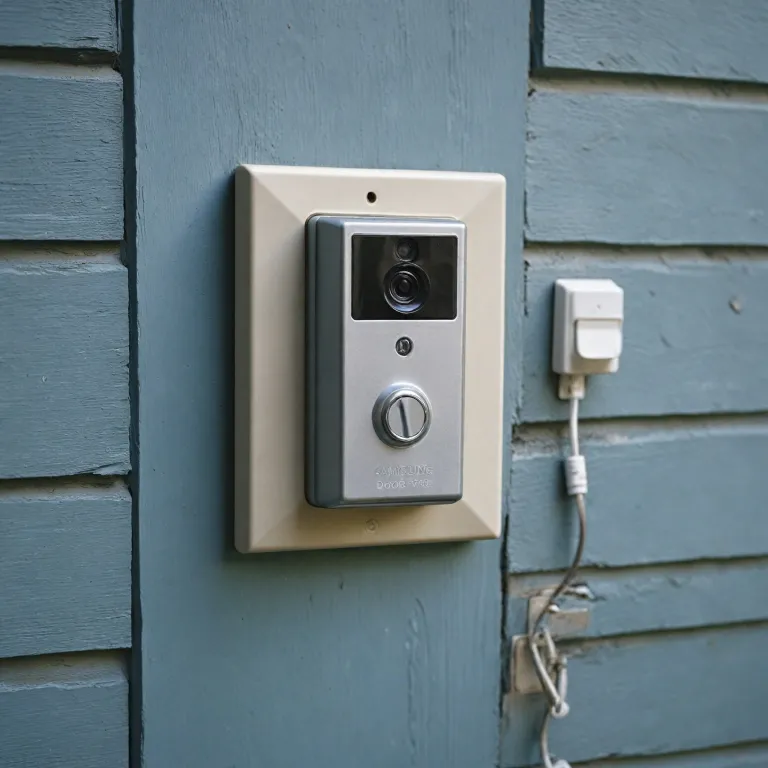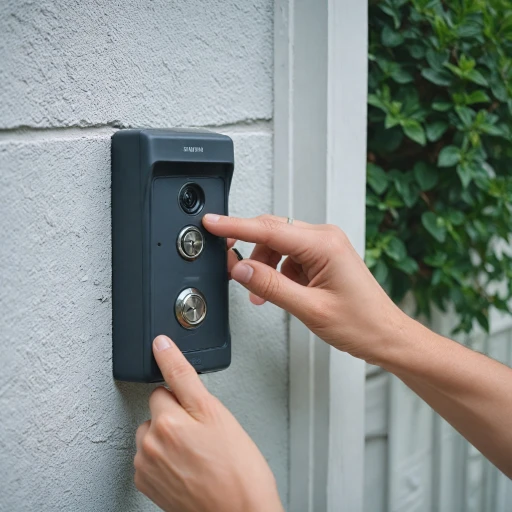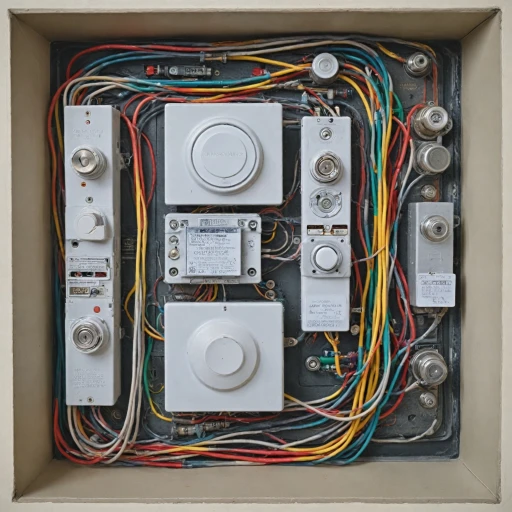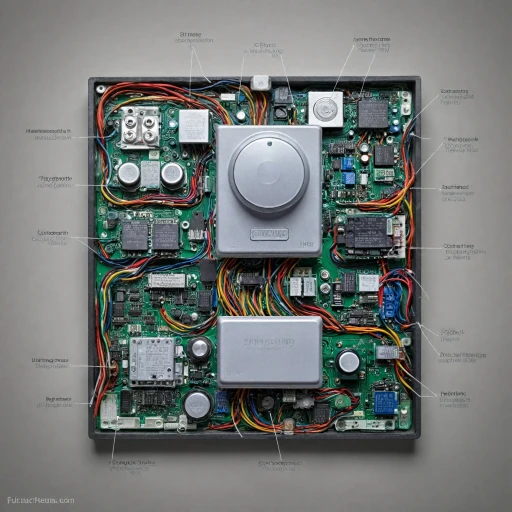
Understanding the Role of a Doorbell Transformer
Decoding the Function of a Transformer
A doorbell transformer plays a pivotal role in the functioning of your doorbell system. Simply put, it acts as a bridge between your home's high-voltage electrical supply and the low-voltage requirements of a doorbell chime. Understanding how it works can make the installation or replacement process much smoother. When you ring your doorbell, it's the transformer's job to convert the main voltage from your home, usually between 120 to 240 volts, down to a safer, low-voltage level—often 8, 16, or 24 volts. This conversion is crucial for the proper, and safe, operation of your doorbell system, whether it's a traditional wired setup or a modern smart doorbell that integrates security features. Installing or replacing a transformer involves working with electrical components, and safety should always come first. It's essential to understand how the wires are set up before you start installing a new transformer. Power down your circuit breaker to ensure there is no electrical flow, preventing any accidents. Performing a doorbell install with a new transformer is an excellent DIY project for those familiar with handling electrical work. Furthermore, ensure you have a clear understanding of the connection between different wires—such as doorbell chime wires and doorbell wires—to facilitate a smooth setup. By getting acquainted with the basics of a doorbell transformer's operation, you'll be better prepared for other parts of the process, whether you're replacing an old unit or tackling other technical aspects like troubleshooting wiring issues that might arise post-installation. For a seamless experience in installing or troubleshooting your smart doorbell, you might find these extensive and insightful guides on how to easily get the ring video doorbell app particularly helpful in managing your device’s features more effectively.Gathering the Necessary Tools and Materials
Tools and Materials You'll Need for the Journey
Embarking on a DIY journey like installing a doorbell transformer requires careful preparation. The success of this task hinges on having the right tools and materials at your disposal. From managing the doorbell's electrical wiring to ensuring the correct placement of components, each step demands precision and the appropriate resources. Here's a breakdown of the essentials you'll need to gather.
- Doorbell Transformer: Ensure you select an applicable type transformer suited to your doorbell’s voltage needs. Low voltage models are standard for most setups.
- Multimeter: A critical tool for testing voltage levels and ensuring your wire doorbell is functioning correctly.
- Screwdriver Set: Essential for loosening and tightening screws during the removal and installation process.
- Wire Strippers: Perfect for handling the doorbell installing wires and making necessary adjustments for optimal contact.
- Voltage Tester: To verify the power flow in the wires before proceeding to install the doorbell.
- Electrical Tape: Ensures security and safety by adequately sealing connections.
- Drill: Depending on the work scope, a drill might be required to secure the transformer inside the breaker box or other mounting points.
- Circuit Breaker: Knowledge of your home's breaker system is vital. Be prepared to turn the breaker off during the installation to ensure electrical safety.
Having these tools on hand will streamline your process and help you avoid common pitfalls. If you're still unsure about gathering resources or the installation process overall, consider accessing video guides or consulting with a professional for additional guidance.
Locating the Existing Doorbell Transformer
Finding the Current Transformer Location
Before proceeding with installing the new transformer, it's essential to locate the existing one. Older homes might have the doorbell transformer mounted in less obvious places, so some detective work is required. Begin your search in these common locations:
- Electrical Box: Check inside the main breaker box. Often, the transformer will be inside or attached to the exterior of the box. Make sure the power is off by turning the relevant circuit breaker to the off position, ensuring your safety while you work.
- Near the Chime: If your doorbell chime is mounted on a wall, the transformer may be nearby, possibly hidden in a closet or crawl space.
- Attic or Basement: Some homes have transformers installed in attic spaces or basements to keep them out of sight. A thorough search with a flashlight might be necessary.
If the transformer is not easily visible, following the doorbell wires might lead you to its location. Look for a small box that connects to the electrical wires.
Once you've located the transformer, ensure all necessary safety measures are taken before proceeding. Remember, when working with electrical components, it's crucial to verify there’s no power running through the system. Using a voltage tester can confirm that the current is indeed off before you begin any modifications or install doorbell components.
For those who might be considering upgrading to a smart doorbell, it's important to understand the implications, including potential costs. You may find it beneficial to review this comprehensive guide on the costs of Ring doorbell subscriptions.
Removing the Old Transformer
Removing the Older Electrical Component Securely
When it comes to replacing your doorbell transformer, the removal of the previous one is a crucial step. Before you dive in, make sure to turn off the power to prevent any electrical mishaps. This can be done at the circuit breaker. Steps to Safely Remove the Old Transformer:- Locate the Circuit Breaker: Identify the breaker powering your doorbell system and switch it off. This ensures a safe work environment, eliminating the risk of electric shock.
- Find the Existing Transformer: Use a flashlight if necessary, as doorbell transformers are often tucked away in inconspicuous places like the basement, attic, or near the breaker box.
- Disconnect the Wires Carefully: Once you've located it, take note of how the wiring is configured. This will guide you when installing the new unit. It's helpful to take a picture or make a quick sketch for reference. Unscrew the wires, keeping in mind their original positions.
- Remove the Transformer Mounting: Using a screwdriver, typically a Phillips head, remove any screws fixing the transformer in place. Carefully lift it out without yanking on the wires.
- Inspect the Area: With the transformer removed, inspect the wires and the wall cavity. Ensure there's no damage or exposed wire ends. This will help you during the installation of the new transformer.
Installing the New Transformer
Securing the New Transformer Properly
Once you've safely removed the old transformer, it's time to install the new one. First, ensure you have the correct type of transformer and that its voltage matches your doorbell's requirements. Smart doorbells like the Ring video doorbells often require specific voltage levels, so double-check this aspect.- Start by turning off the power to the circuit at the breaker box to avoid electrical hazards while working.
- Identify the doorbell wires that will connect to the new transformer. These typically include low voltage wires that link the doorbell to the transformer and power the doorbell chime.
- Use a screwdriver to mount the new transformer securely in the desired location, often on a junction box or within close proximity to the existing wiring system.
- Connect the transformer's wires to the corresponding doorbell wires. You may need to use wire nuts for a secure connection.
Ensuring Reliable Power Supply
After connecting the wires, make sure that the transformer is well-positioned and the connections are firm. Any loose wiring can lead to interruptions in power and prevent your doorbell from functioning properly.- Once the wiring is in place, turn the circuit breaker back on to restore power and see if the doorbell chime works as expected.
- If the chime doesn't sound, double-check the wiring connections and ensure the transformer is properly seated and secured.
Installing the new transformer is a critical part of your doorbell installing journey. While this process is manageable for most DIY enthusiasts, those not comfortable with electrical work might consider hiring a pro to ensure safety and effectiveness.
Testing and Troubleshooting
Activate and Ensure Functionality
Once you've installed the new transformer, it's time to restore power and check if your work has been successful. Begin by turning the circuit breaker back on to supply power to the transformer and doorbell system. Once the breaker is on, your doorbell should have the electrical current it needs to operate.- Check Connections: Ensure all wires are securely connected to the transformer. Loose doorbell wires can disrupt the electrical flow necessary for the system to function properly. Double-check that all screws are tight and that the doorbell wires are in their correct positions.
- Test Voltage: Utilizing a voltage tester can help confirm that the transformer is producing the correct voltage for your doorbell chime and other components involved. A recommended practice for DIY projects like this is verifying the power at multiple points within the system to confirm everything is correctly wired and operational.
- Operate the Doorbell: Press the doorbell button to ensure the chime is working as expected. It's crucial to confirm that the doorbell chime produces sound and that your ring video doorbell or smart doorbell responds properly, confirming that the full setup is functional.
Identify and Resolve Issues
If problems are identified, you'll need to troubleshoot to restore proper functionality.- Review Connections: Verify that all electrical connections are secure and that there are no loose wires in the box or poor contacts that could result in faulty operation.
- Check for Shorts: Ensure that there are no short circuits that could create a failure in the doorbell operations. Shorts can be caused by exposed wires contacting each other or other metal inside the wiring box.
- Consult Instructions: Refer back to the installation instructions and the setup videos if needed, as they often provide crucial steps and troubleshooting tips specific to the type of transformer and doorbell being used.












